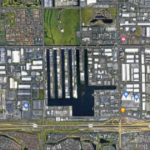This post is part of a series sponsored by IAT Insurance Group.

The driver shortage continues to be a major challenge for fleets across the country. That’s because the industry is short an estimated 80,000 drivers, a number estimated to climb to 160,000 by 2030.[1]
Exacerbating the issue is the aging demographic in the commercial truck driving industry. Currently, the average age of commercial truck drivers in the United States is 48 years old.[2]
One important recruitment strategy for fleets is to bring in younger drivers, and in many states, 18-year-olds can now qualify for a commercial driving license (CDL) although they can only operate a commercial vehicle within their own state. Once drivers turn 21, they are allowed to drive intrastate.[3]
To keep new and younger drivers safe, the Federal Motor Carrier Safety Administration (FMCSA) is mandating all new drivers to complete the Entry-Level Driving Training (ELDT) program, a national baseline safety standard, before they test for their commercial driver’s license (CDL). Many fleet carriers are now becoming certified ELDT training sites so they can onboard and train new drivers quickly.
ELDT Program Requirements
ELDT training requirements for entry-level drivers pertain to uniform safety requirements for operating commercial vehicles.[4] This applies to:
- Entry-level drivers who want to obtain a Class A or Class B CDL for the first time
- Drivers who want to upgrade an existing Class B CDL to a Class A CDL
- Drivers who want to obtain a school bus (S), passenger (P), or hazardous materials (H) endorsement for the first time[5]
The rules took effect for those applying for a commercial learner’s permit (CLP) on or after Feb. 7, 2022.
The ELDP requirements include both theory and behind-the-wheel training. The curriculum includes:
- Lectures, demonstrations, and computer-based online learning
- Training on orientation, basic operation, safe operating practices, advanced operations, and non-driving activities such as logging or hauling cargo at a location
- A minimum score of 80% on the assessment
For the behind-the-wheel training, this includes:
- Training to take place in a CMV on a range or public road
- Simulators are not permitted
- Drivers are trained on basic vehicle control skills and mastery of basic maneuvers.
the trainer determines the driver’s level of proficiency. 4
ELDT training registry
The ELDT requires fleets offering training to join their training registry, allowing drivers to find and connect directly with you. To qualify as an in-classroom trainer, your instructors must have at least two years of CDL driving and experience pulling trailers. To provide behind-the-wheel training, driver instructors must have two years of experience as a behind-the-wheel instructor[6].
Young new hires must complete all their training before going to their state licensing department to take a CDL skills test. FMCSA requires the trainer to input all relevant information into their system within 24 hours of training completion to enable their student to take the test.
Instructors also must keep their own CDL in good standing and provide good quality training. If the FMCSA determines an instructor is not doing their job, they can remove that individual from the training registry.
For more information on setting up your ELDT program or onboarding drivers with the program reach out to IAT’s transportation team.
ASK AN LCR
Have a question on how to mitigate risk? Email losscontroldirect@iatinsurance.com for a chance to see your question answered in a future blog.
By Nancy Ross-Anderson
[1] American Trucking Associations, Inc. “Driver Shortage Update 2021,” October 25, 2021.
[2] Zippia “Professional Truck Driver Demographics and Statistics in the US,” September 9, 2022.
[3] Smart Trucking CDL Age Requirements: A Quick Guide to Truck Driver Age Limits,” February 23, 2022.
[4] FMCSA “Training Provider Registry.”
[5] FMCSA “Entry-Level Driver Training (ELDT),” February 8, 2022.
[6] FMCSA https://tpr.fmcsa.dot.gov/FAQ/Topics/provider-requirements
Was this article valuable?
Here are more articles you may enjoy.


 Zurich American Off the Hook on Harvard’s Legal Costs in Affirmative Action Case
Zurich American Off the Hook on Harvard’s Legal Costs in Affirmative Action Case  ChatGPT Fever Spreads to US Workplace, Sounding Alarm for Some
ChatGPT Fever Spreads to US Workplace, Sounding Alarm for Some  Kellogg’s ‘Woke’ Workplace Diversity Programs Are Illegal, Group Claims
Kellogg’s ‘Woke’ Workplace Diversity Programs Are Illegal, Group Claims  Divers Find 32 Cars Submerged in Lake Near Miami
Divers Find 32 Cars Submerged in Lake Near Miami 

